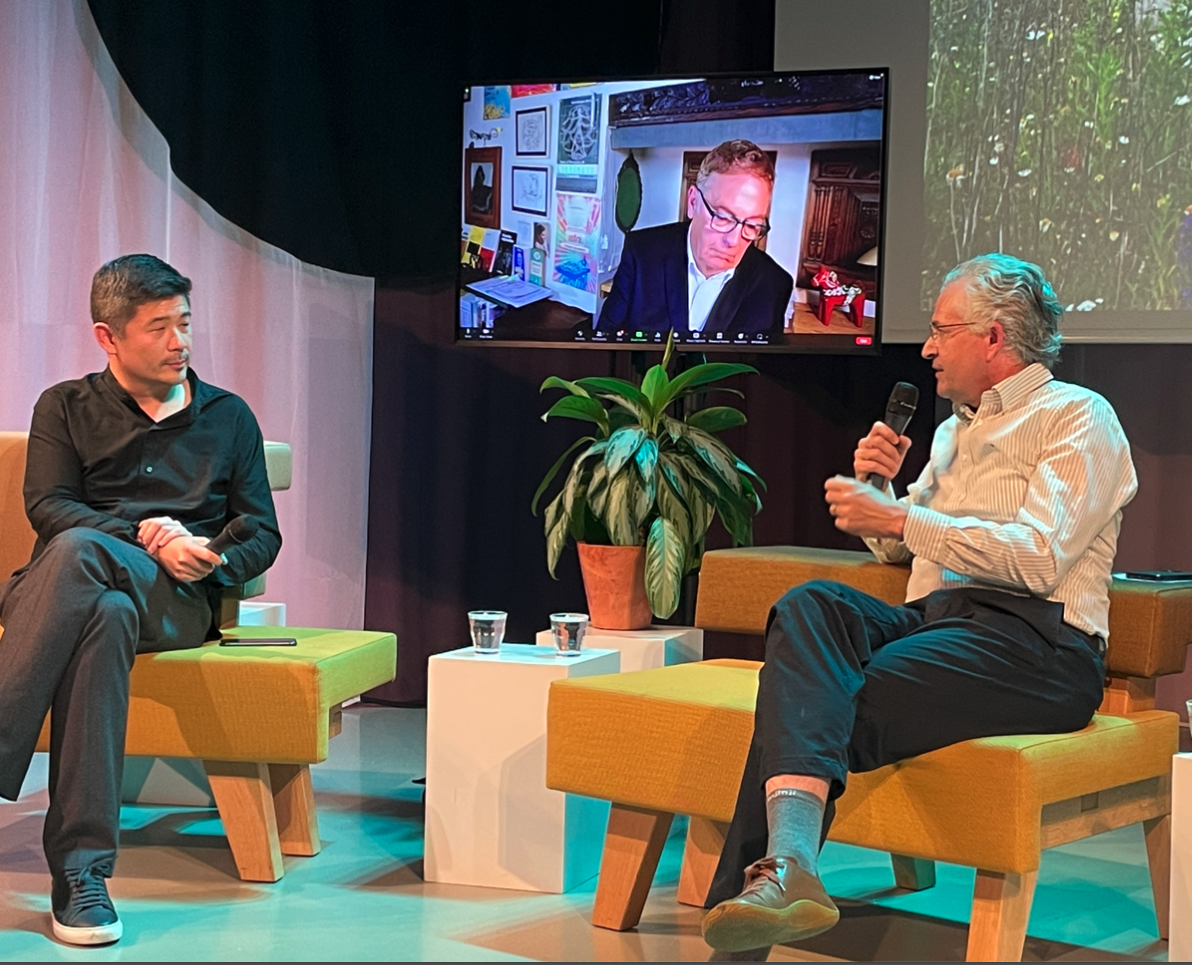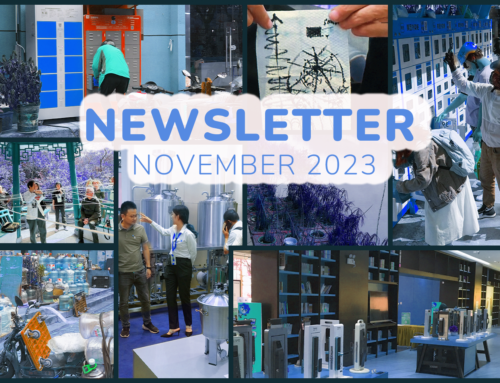I was invited by Aric Chen (left, above) director of Het Nieuwe Instituut in Rotterdam, to join a Dutch Design Day discussion on “Revisiting Design Institutions”. Our panel of former institute directors included Dingeman Kuilman (right). Here is my five minute introduction.
In 1993, soon after I arrived in Amsterdam to start work as the Vormgevingsinstuut’s first director, I met the eminent Dutch engineer, Leo Jansen. For 20 years, Jansen been a leading member of the global scientific community that produced Limits to Growth in 1970. That book had famously warned of an “imminent global disaster” if industrial capitalism continued on its perpetual-growth, extractivist, path.
“If we are going to be serious about sustainability” Jansen told me, “we rich countries have to reduce our energy and material throughputs by a factor of 20 times. To be sustainable, today, means meeting our basic needs using 5% of the resources we are using now”.
Woah! Factor 20! Five percent! That conversation had a profound impact on the Design Institute’s first director. I knew sustainability involved change – but not how much. I checked Jansen’s proposition, of course, but the conclusions remained the same. Business as usual – design as usual – was clearly not an option if the planet was to have a chance.
That well-intended idea proved easy to think – but harder, in practice, to do. In retrospect, I should have listened better to Leo Jansen, at the end of our talk, when he said: “by the way, nobody wants to hear about any of this”.
A good example of my naivity, on this point, concerned energy blindness. I went around telling designers: “You and I use more energy and resources in single month than our great-grandparents used during their entire lifetimes. And we’re doing that on a finite planet. Isn’t that crazy?” Most of time I was greeted not by cries of “we must do something!” – but by blank stares. The reason slowly dawned on me: I failed to explain what designers were supposed to do with his shocking information.
Later, 17 years after that talk with Leo Jansen, I read these wise words of Raymond Pannikar, the Spanish theologian, about how change happens. “The destruction will stop when we see nature differently, relate differently, understand our purpose here differently” Pannikar wrote. The lesson finally sank in. People don’t change when you accuse them of killing the planet. They don’t change if you bombard them with scientific charts. People change, societies change – when they have a new sense of purpose.
For me, designing for life is that purpose. By designing for life, I don’t mean a warm and fuzzy feeling, a state-of-mind. I certainly don’t mean a clever financial trick, or greenwashing, or a box to be ticked. On the contrary: Designing for life is a practice. It’s something we can all do.
The role of design institutions, in today’s context, is a practical one. It’s to enable reconnection with nature, and designing for life. That’s it. Teach designers how to think – and practice – ecologically. Help them explore the qualities and assets of their bioregion. Add their design skills to ecological restoration projects. Innovate ways to meet daily life needs using five percent of the resources we’re used to. Focus design on care, more than consumption.
That’s a long to-do list. Designing for shared aliveness involves an ecosystem of services, relationships, spaces, and equipment. All of these need to be designed. But there is a catch. The purpose of these institutions is to serve their place – not themselves, and not the design profession.
If you run an institution, and this shift in priorities sounds hard, there are examples out there to learn from. Local libraries, museums, and community colleges, already act as anchor institutions that serve their place. The world’s small farmers know about biocultural diversity. Indigenous peoples are experts in cognitive justice – or for that matter, AI. Go and partner with them.
Aric has posed us a final question: “What does it mean to be a designer today, or a design institute?” A five percent economy, a Factor 20 economy, involves a lot of care, a lot of craft, and a lot of creativity – in short, a lot of design. Designing for life is no longer about pushing people where they don’t want to go. It’s about opening a door.

